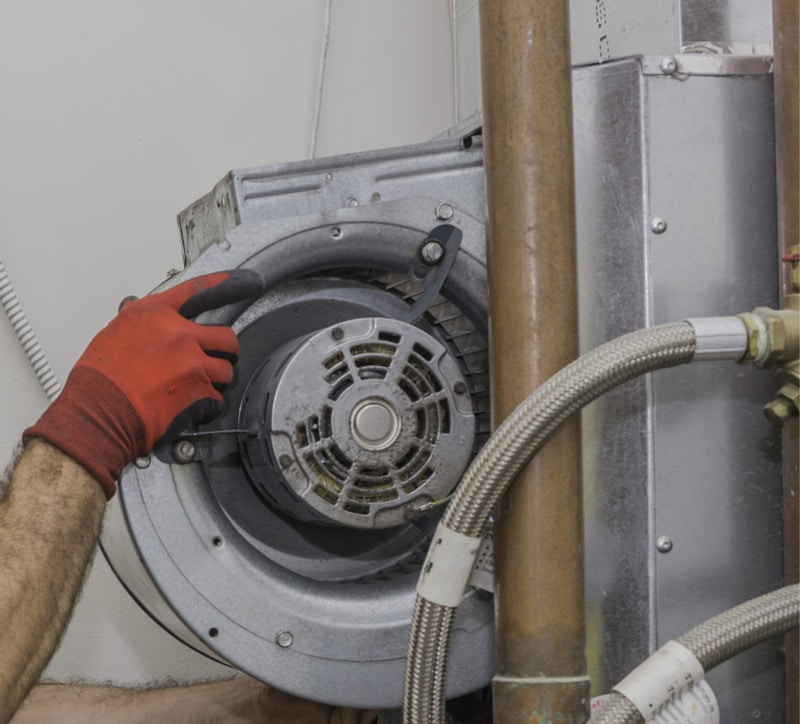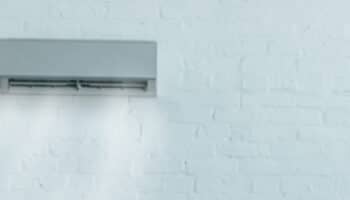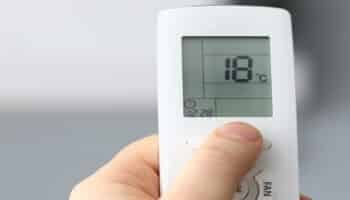We've independently reviewed this article to make sure it's as accurate as we can make it.
To find out more about our article creation and review process, check out our editorial guidelines.
The winter is finally over! The sun is shining and your spot on earth is finally warm again.
So hot it’s time to turn on the AC . . . but it won’t turn on! So here you are, desperately looking for ideas on fixing that air conditioner that won’t start after the winter.
Typically, there are 3 things that may be the cause of your air conditioner refusing to start in the spring. So the first things you want to rule out are a tripped circuit breaker or blown fuse, if the emergency shutoff is engaged, or if you have a dirty filter.
Note that it’s while those are the most common reasons, there are others. I’ll list them below.
How To Fix An Air Conditioner That Won’t Start In The Spring
Follow these troubleshooting steps, and you should be up and running again. I’ll start with the common, simple things and move on to more problematic issues.
Check Your Thermostat
Sometimes it’s the simplest things. So make sure your air conditioner light and display is on and set to COOL and do a test. Simply adjust the temperature to about 5 degrees below what the thermostat is currently set at.
Did your AC kick in? If so, you’re good to go.
Check Your Filter
A clogged air filter will impede airflow through your system, and it may shut itself down to avoid damage.
If your filter is dirty, change it and see if the air conditioner turns on. And remember to change or clean it regularly in the future.
Check For a Tripped Breaker or Blown Fuse
Depending on your home, you either have circuit breakers at your main electrical panel. Confirm that the breaker for your air conditioner hasn’t tripped.
Check The Emergency Shutoff Switch
Your air conditioner should have a disconnect mounted outside close to your condenser unit. Make sure it hasn’t been switched to the off position.
Look For an Indoor Power Switch
You may have a switch that looks like a regular light switch located somewhere near your indoor unit. Make sure it’s switched on.
Make Sure Your Drain Pan and Condensate Line Aren’t Clogged
Your system can shut itself down if the drain pan is full. The cause of this is often a clog in your condensate line. Check for blockages, and get your condensate flowing freely again.
Find the indoor unit and see if the pan is full of water. There is normally a ‘float switch’ on the pan which will shut off the air conditioning unit if there’s too much water.
Does Your System Have A RESET Button?
Not all systems have a reset button, however, you can check on the outside condenser unit to see if it has one. If so, press and reset it to see if this helps. If there is no reset button at the condenser, you can also turn your system off at the thermostat. You’ll just want to wait at least 5 minutes before turning it back on again.
Blower Motor Problems
The fan on your system runs year-round, in both the heating and cooling seasons. If it’s old—and particularly if you don’t maintain your system—there is a chance it just refuses to start again after running all winter.
If your blower motor has seized there is a good chance your system won’t start at all.
If this is your problem, you’ll need check a supply vent that normally blows air or go to a return grill and see if air is pulling out. That will let you know if your blower is working if you’ve turned on the AC or fan on via the thermostat.
Thankfully, the Department of Energy published a handy list of the most common air conditioner problems that you can refer to as well.

What You Can Do Maintain Your Air Conditioner
Want your air conditioner to start every spring? Then keep it well maintained.
Here are several things you can do regularly to keep it running, year after year.
Before doing any of these make sure you turn the power to your air conditioner off. You can either do this at the shut off outside near your compressor unit or at the breaker or fuse box.
Keep The Area Around Your CondenserClean
Your condenser sits in the elements year-round, and it can take a beating. A lot of debris can also collect around it. So make sure to take away any twigs or leaves that may have collected close to it.
Also, don’t plant anything within two to three feet of your condenser.
Clean your Compressor and Condenser
Your condenser is located outside, inside the compressor unit.
Open up the fan cage that’s located on the top of the compressor and clean inside. There may be a buildup of leaves and other debris.
If dirt gets built up over the coils it can reduce the amount of heat they absorb—heat that is pulled from your home. This means your air conditioner has to work harder.
Putting a strain on your AC can reduce its lifespan, or lead to things like it refusing to start in the spring.
Here is a great walkthrough on how to clean your compressor unit.
Change Or Clean Your Filter Regularly
Making sure your air is passing through a clean filter is probably one of the most important things you can do to maintain your HVAC system. Fortunately, it’s an easy thing to do as well.
A dirty or clogged air filter can reduce airflow and force your blower motor to work harder, which can eventually damage your system. Whether you have filters that are reusable or replaceable make sure you follow the replacement or cleaning schedule.
There is a little bit of leeway here depending on your household. For example, if you are a single person or a couple living in a home without pets, you can probably expand the amount of time necessary between replacements.
However, if you are a large family with several pets you would want to change your filter even more often.
Check The Fins
Over time, as your condenser sits outside in the elements, the fins get damaged and restrict airflow. And if you haven’t guessed it by now, anything that restricts airflow in your HVAC equipment is a bad thing.
There are several different tools on the market that you can purchase to help straighten your fins, and you can follow the directions in the video below on how to do the job.
Inspect The Condensate Drain
If the condensate drain becomes clogged, which it will overtime, it can shut your system down. Especially if the drain pan begins to overfill. A float in the pan will signal a problem and as a precaution and shut off your air conditioner.
Regular maintenance of both the pan and the line will save you from future headaches.
Conclusion
As you can see, there are several things to check if your air conditioner refuses to start in the spring.
Typically, the most common issues are a tripped circuit breaker, a blown fuse, or maybe the emergency shut off has been engaged.
To recap, here are the other things you need to look into:
- Check your thermostat
- Check your filters
- Look for an indoor power switch
- Make sure your drain pan and condensate line aren’t clogged
- Look for a reset button on your compressor
- Make sure you have no motor problems
Any one of those things could stop your air conditioner from restarting. The good news is, with the exception of fixing or replacing a blower motor, they are relatively simple things you should be able to deal with yourself.
Hopefully, you found an answer to your problem, so thanks for reading through.
While you’re here, why not check out our related posts below? Maybe we can help you with something else as well.







